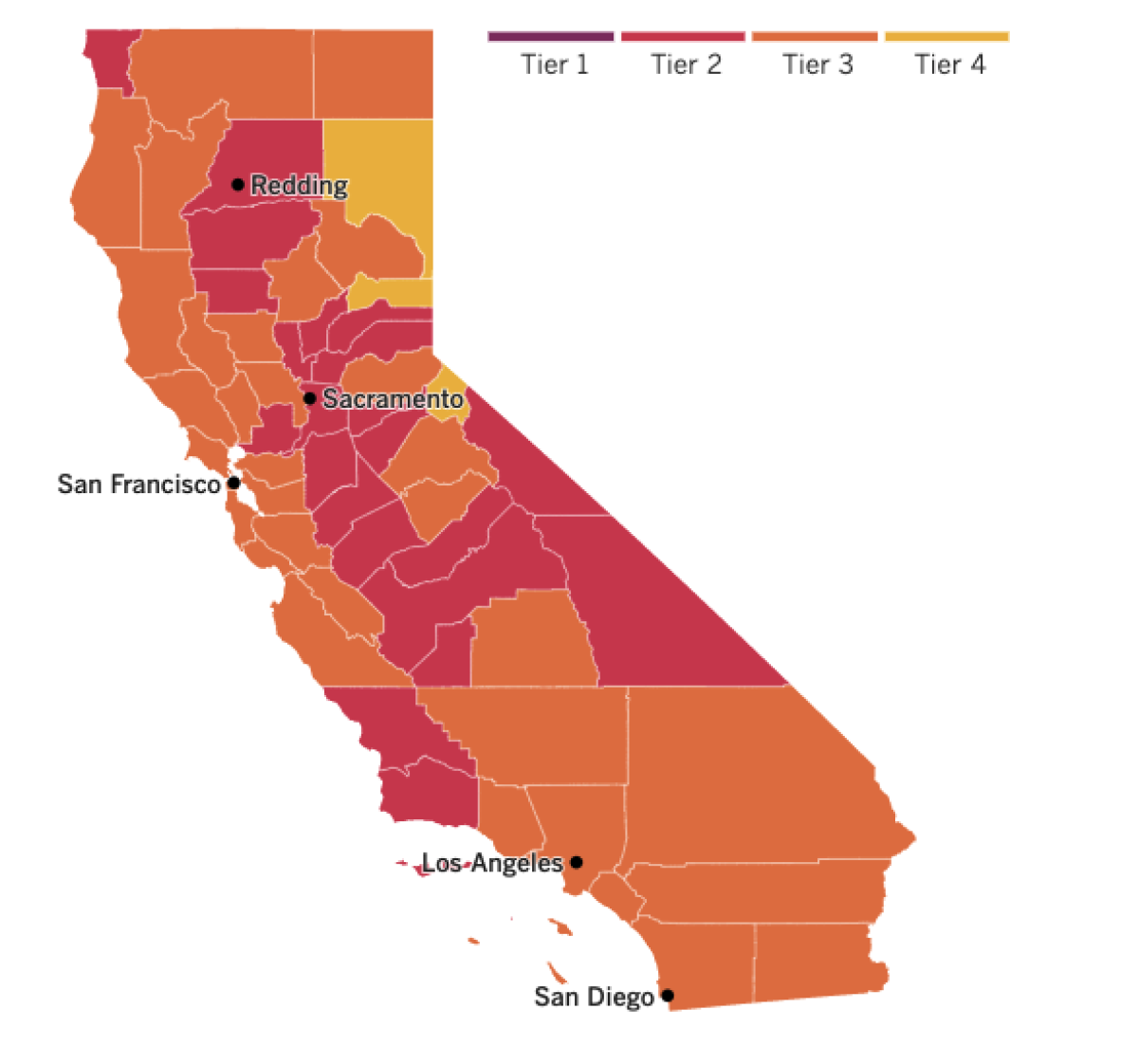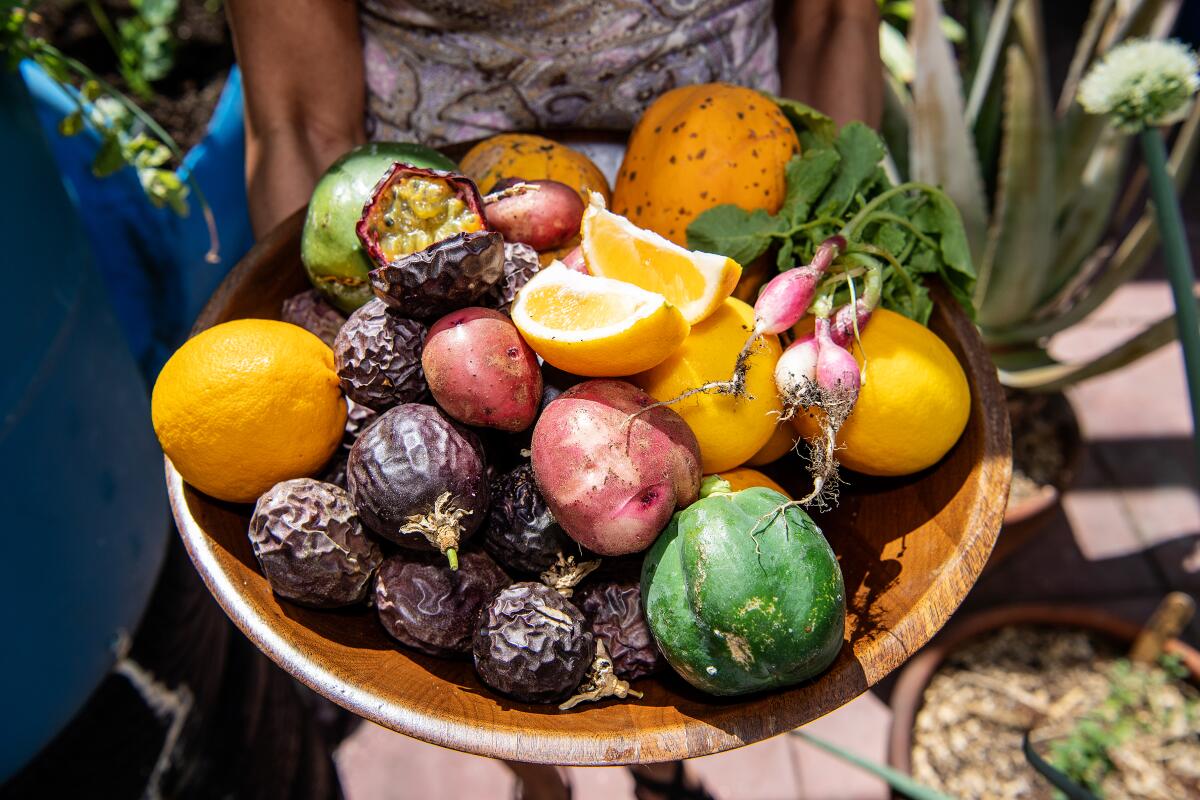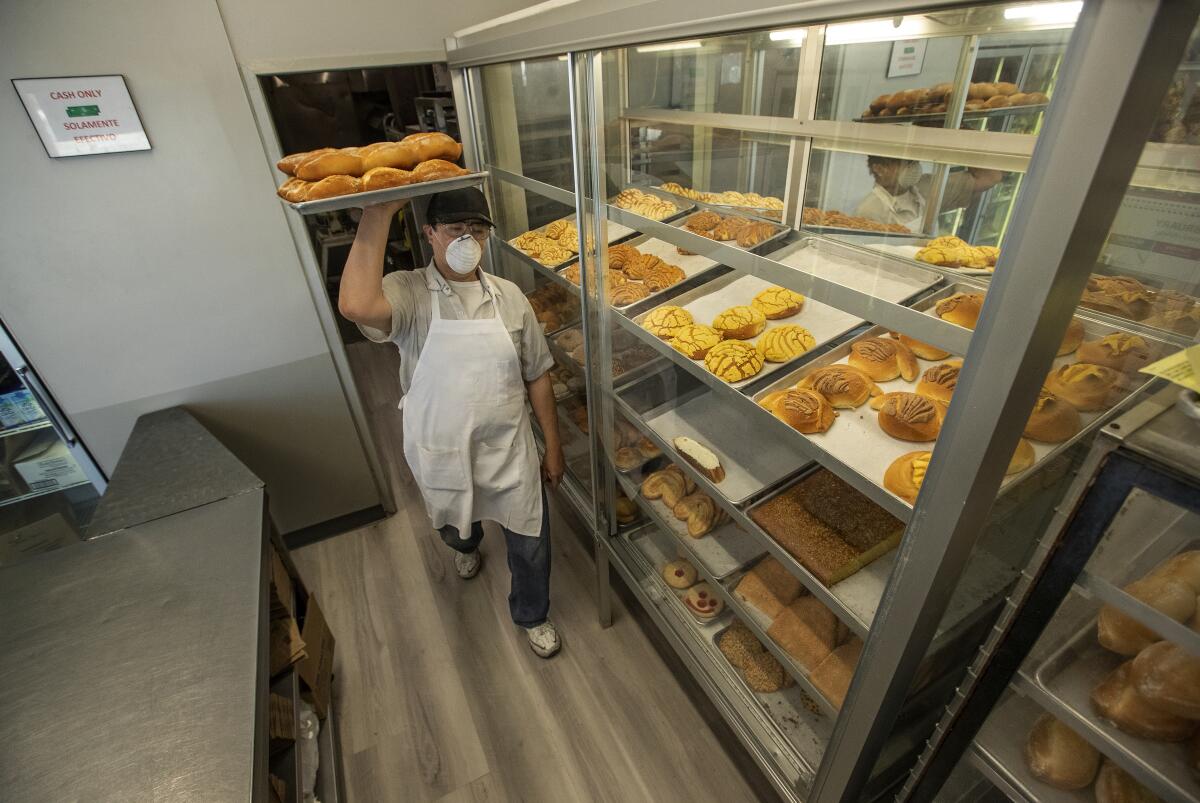Coronavirus Today: How best to ‘do no harm’?
Good evening. I’m Melody Petersen, and it’s Friday, April 16. Here’s the latest on what’s happening with the coronavirus, plus ways to spend your weekend and a look at some of the week’s best stories.
“Do no harm” is a phrase from the Hippocratic oath and the guiding principle of medical care.
It was uttered multiple times this week during a highly charged meeting of vaccine experts who convened to advise the Centers for Disease Control and Prevention on the safest course of action after six people developed a rare blood-clotting disorder after receiving the COVID-19 vaccine made by Johnson & Johnson.
The experts ultimately decided to hold off on making any decisions until more data — and potentially more victims of blood clots — emerge.
But they made clear that even a brief pause in the use of one of three authorized vaccines will leave some people vulnerable to a serious case of COVID-19 a little longer.
In a situation like this, writes my colleague Melissa Healy, the advisors asked themselves: What does it mean to “do no harm”?
“I would characterize it as wrenching,” Vanderbilt University vaccine expert Dr. William Schaffner said of the advisory committee meeting, which he attended as a nonvoting representative. “All you had to do was listen to the stress in the voices of my colleagues as they discussed this.”
In the best of times, doing no harm is a delicate balancing act. Healing the sick routinely involves risky procedures, and medicines that can kill as well as cure.
That tradeoff is even more fraught where vaccines are concerned. Perturbing the immune system of a healthy person to prevent an infectious disease just might save her life — if she’s exposed to the disease-causing germ. But vaccines might elicit dangerous reactions in some people who might never have caught the bug in the first place.
Now put this conundrum in the context of a raging pandemic that’s infecting roughly 70,000 Americans a day, and has killed close to 3 million people worldwide.
“It’s a hard balance to strike,” said Dr. Camille Nelson Kotton, one of the panel’s members.
Until they find it, 9.2 million doses of Johnson & Johnson’s COVID-19 vaccine will sit in boxes at drugstores, doctors’ offices and administration sites across the country.
California officials say the temporary pause will do little to slow the state’s vaccination efforts. By far the vast majority of the state’s supply is produced by Pfizer-BioNTech and Moderna.
This week all California residents 16 and older became eligible for the shots. And more than half of adults in the state have now received at least one vaccine dose, a promising milestone.
To date, 52.2% of all adults have been at least partially vaccinated, according to the latest data from the CDC, ranking California 11th among all states on that metric. (Only 29.2% are fully vaccinated. That percentage trails the nationwide figure, 30.3%, and ranks 36th among states.)
At the same time, California’s economy is slowly picking up as businesses reopen. But stubborn joblessness persists as many simply stop looking for work.
California’s unemployment rate dropped to 8.3% in March from 8.5% a month earlier. That slide was mainly caused by nearly 40,000 workers quitting the labor force, economists said.
The state’s economy is recovering more slowly than the nation’s as officials have been more cautious in lifting restrictions on businesses than has been the case in other states. After New York and Hawaii, California unemployment was the third-highest in the nation, tied with New Mexico.
“California is clawing back some of the huge job losses suffered during the pandemic,” said Lynn Reaser, an economist at San Diego’s Point Loma Nazarene University, “but much progress remains to be achieved.”
By the numbers
California cases and deaths as of 6:02 p.m. Friday:

Track California’s coronavirus spread and vaccination efforts — including the latest numbers and how they break down — with our graphics.
See the current status of California’s reopening, county by county, with our tracker.


What to read this weekend
Battling food insecurity by sharing
When Erica Levi, a disabled single mom, received a 12-pound sirloin roast, she knew she would have leftovers after she served it to her family of four. Concerned about spoilage, she acted quickly.
By posting on two Facebook gift economy groups, Levi quickly found nine neighbors with whom she could share. “It was a wonderful lesson I got to teach my children as well — that giving is a beautiful gift,” she said.
Using apps and Facebook groups, more people are sharing food with others during the pandemic. Read about how Angelenos are joining the online gift economy — an informal system of giving without the expectation of receiving anything in return.

A cautious reopening for L.A.’s Latino neighborhoods
Miguel Dominguez and his son, Jesse, filled a few trays with pig-shaped puerquitos and football-shaped bolillos, then stuck them in the oven. Back when business was good, they would keep going until stacks and stacks of trays were full of the Mexican breads. On this recent morning, they didn’t expect to sell much. The “ding dong” announcing a customer’s arrival came only a handful of times in an hour.
California’s economy is rapidly reopening a year after the pandemic began. But this rebirth is playing out more cautiously in places like Whittier Boulevard in East Los Angeles, an epicenter of the coronavirus crisis. Like other overcrowded, immigrant communities filled with essential workers, the Eastside was devastated by COVID-19 in ways that more affluent parts of Los Angeles could barely imagine. Here, people are shell-shocked by job loss, illness and death.

The pandemic deprived us of human touch. Now come the hugs
Ruth Alcantara stepped closer to her grandmother. Then closer, and closer still. She crossed into the six-foot buffer zone that had separated them for so long and wrapped her arms around the older woman. “Hola, abuelita, le extrañe mucho,” she said, inches from her grandmother’s ear. Hi, grandma, I missed you so much.
The past year is believed to be the first time that millions of people stopped touching for a prolonged period of time. Many described a new kind of longing, what’s been called “touch deprivation” or “skin hunger.” Now as more Americans are vaccinated, reunions among loved ones are becoming increasingly frequent and, for many, hugging is the main event.

The Pollo Campero Express is flying again
For years, people have flown from Central America to the U.S. bearing boxes of Pollo Campero. Plane cabins become infused with the scent of the deep-fried chicken. Relatives who otherwise avoid the snarl of the 405 and 105 freeways at rush hour suddenly brave a trip to LAX to pick up their chicken-carrying kin.
The pandemic temporarily halted Operation Chicken Airlift after the international airports in El Salvador and Guatemala shut down a year ago. But now, with the airport restaurant locations open once more, the chicken express is back in business.
“I don’t think that the chicken is amazing, but what gets me every time is just that feeling of home,” said Cesar Valencia, a San Fernando Valley resident who was born in El Salvador. “When you miss home, you miss everything about it.”

Your support helps us deliver the news that matters most.
What to do this weekend
Attend our virtual Festival of Books. The event, running April 17-23, will feature more authors (about 150) and more online events (more than 30) than last fall’s. Authors, moderators and guests will include Zooey Deschanel, James Patterson, Chang-Rae Lee, Lulu Miller, Viet Thanh Nguyen, Richard Thompson and Nikky Finney as well as Meena Harris, niece of Vice President Kamala Harris. Here’s the full list of panels. Find more details on the event website.
Get outside. Get into any of the nine national parks in California for free on Saturday, the first day of National Park Week. The closest one is Joshua Tree, 140 miles from downtown L.A. Subscribe to The Wild for more on the outdoors.
Watch something great. Our weekend culture watch list includes a satire about the origins of the Iraq War, written and directed by Tim Robbins. The Actors’ Gang in Culver City streams a filmed version of this off-Broadway production at 7 p.m. Saturday; pay what you can. And in his Indie Focus newsletter’s roundup of new movies, Mark Olsen writes about the new documentary “Gunda,” which follows a pig and her litter of babies as they go about their lives on the farm, in an immersive view of the animal world.
Eat something great. Ben Mims writes about artichokes — and why it is OK to use those bought from the store already prepared. Find his recipes here. In our Tasting Notes newsletter, Alice Short looks at whether it is finally time to gather with friends for cocktails at a bar.
Go online. Here’s The Times’ guide to the internet for when you’re looking for information on self-care, feel like learning something new or interesting, or want to expand your entertainment horizons.
The pandemic in pictures

The relaxing of restrictions in L.A. County this month cleared the way this week for a limited number of fans to watch the Lakers in person at Staples Center for the first time in 13 months. More than two hours before Thursday’s tipoff, the first of the more than 2,000 fans permitted to attend had begun trickling into L.A. Live.
The Lakers and Clippers were among the last NBA teams to welcome a limited number of fans at home games. Those who claimed tickets were required to wear a mask and show proof of either being fully vaccinated or a negative test within the previous 72 hours.
Resources
Need a vaccine? Keep in mind that supplies are limited, and getting one can be a challenge. Sign up for email updates, check your eligibility and, if you’re eligible, make an appointment where you live: City of Los Angeles | Los Angeles County | Kern County | Orange County | Riverside County | San Bernardino County | San Diego County | San Luis Obispo County | Santa Barbara County | Ventura County
Practice social distancing using these tips, and wear a mask or two.
Watch for symptoms such as fever, cough, shortness of breath, chills, shaking with chills, muscle pain, headache, sore throat and loss of taste or smell. Here’s what to look for and when.
Need to get tested? Here’s where you can in L.A. County and around California.
Americans are hurting in many ways. We have advice for helping kids cope, resources for people experiencing domestic abuse and a newsletter to help you make ends meet.
We’ve answered hundreds of readers’ questions. Explore them in our archive here.
For our most up-to-date coverage, visit our homepage and our Health section, get our breaking news alerts, and follow us on Twitter and Instagram.




